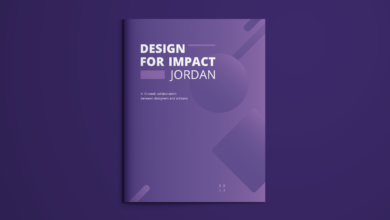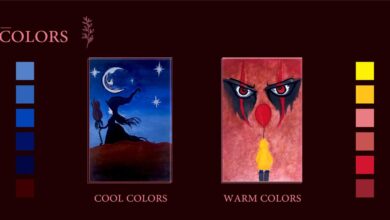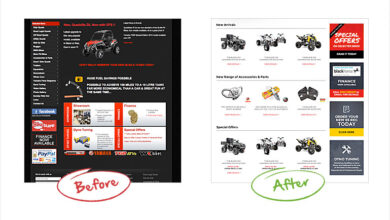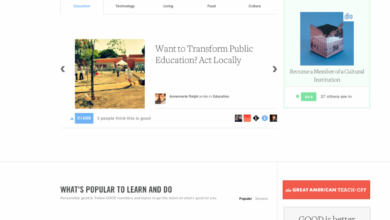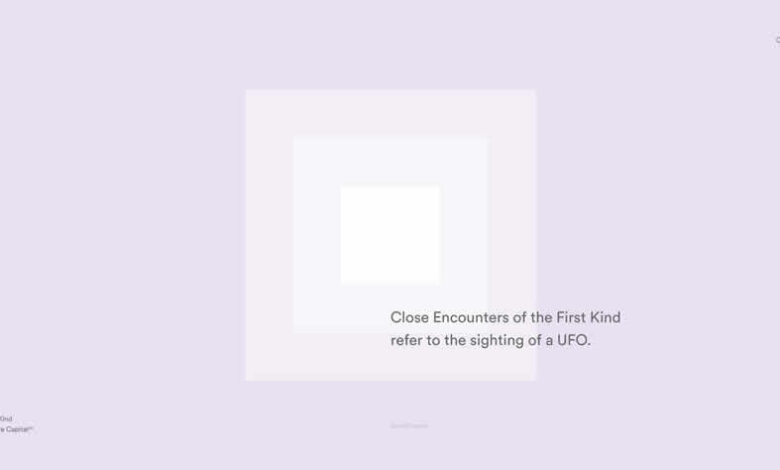
Web Design Is Simplicity Less Is More
Web design is simplicity: It’s a mantra I’ve embraced wholeheartedly in my own design journey. Forget cluttered interfaces and overwhelming visuals; true elegance lies in clean lines, intuitive navigation, and a focus on the user experience. This isn’t just about aesthetics; it’s about creating websites that are efficient, accessible, and ultimately, delightful to use. We’ll explore the core principles of minimalist web design, examining how simplicity translates to improved UX, boosted performance, and a more impactful online presence.
From understanding the power of whitespace and thoughtful typography to optimizing website code for speed and accessibility, we’ll unpack the practical steps involved in crafting truly simple, yet effective, websites. We’ll delve into real-world examples, showcasing how leading brands have harnessed the power of minimalist design to connect with their audiences and achieve their business goals. Get ready to rethink your approach to web design!
Defining Simplicity in Web Design

Source: minutehack.com
Simplicity in web design isn’t just about aesthetics; it’s a fundamental approach prioritizing user experience and efficiency. It’s about stripping away unnecessary elements to leave only what’s essential for a clear, intuitive, and enjoyable online experience. This approach focuses on functionality and ease of use, resulting in a website that’s both visually appealing and highly effective.
Core Principles of Minimalist Web Design
Minimalist web design adheres to a set of core principles to achieve its goals. These principles work together to create a cohesive and effective design. Key among these are the strategic use of whitespace, a limited color palette, clean typography, and a focus on high-quality imagery. Whitespace, often overlooked, is crucial for creating visual breathing room and guiding the user’s eye.
A restricted color palette avoids visual clutter and enhances readability, while clean typography ensures text is easy to read and understand. High-quality images, used sparingly, add visual interest without overwhelming the page.
Benefits of a Simplified User Interface (UI)
A simplified UI offers numerous advantages for both the user and the website owner. For users, it translates to faster loading times, improved navigation, and a more enjoyable overall experience. This leads to increased user engagement and satisfaction. For website owners, a simplified UI can lead to improved search engine optimization (), as search engines favor clean, well-structured websites.
Furthermore, simpler designs are generally cheaper and faster to develop and maintain.
Comparison of Minimalist Design with Other Design Styles
Minimalist design stands in contrast to other styles like maximalism, which emphasizes abundance and visual richness. While maximalist websites might be visually striking, they can be overwhelming and difficult to navigate. Compared to skeuomorphic design, which mimics real-world objects, minimalist design is more abstract and focuses on functionality over visual representation. In contrast to flat design, which prioritizes two-dimensional elements, minimalism can incorporate subtle textures and gradients for visual interest while maintaining a clean aesthetic.
Simple Website Layout Emphasizing Ease of Navigation
A simple website layout should prioritize clear visual hierarchy and intuitive navigation. Imagine a website with a header containing the logo and main navigation menu. Below this, a hero section with a compelling headline and image would attract attention. The main content area should be divided into clearly defined sections with descriptive headings and subheadings. A footer with copyright information and contact details would complete the layout.
All elements should be spaced appropriately to avoid clutter, ensuring easy readability and navigation. The use of consistent typography and a limited color palette reinforces the overall sense of simplicity and order.
Examples of Successful Minimalist Websites and Their Design Choices
Many successful websites exemplify the principles of minimalist design. Consider the website of a high-end watchmaker. Their website might feature high-resolution images of their watches against a clean, white background. The typography would be elegant and refined, and the navigation would be intuitive and straightforward. Another example could be a portfolio website for a freelance photographer.
Here, the focus would be on showcasing the photographer’s work through large, high-quality images, with minimal text and a clean layout. Both examples prioritize visual appeal and user experience, showcasing how minimalist design can be both aesthetically pleasing and highly effective.
Simplicity and User Experience (UX)
Simplicity in web design isn’t just an aesthetic choice; it’s a fundamental principle for creating a positive user experience. A clean, uncluttered interface directly translates to improved usability, faster task completion, and increased user satisfaction. When users can easily find what they need and navigate a site without frustration, they’re more likely to engage with the content and ultimately achieve their goals.Simplicity directly impacts several key aspects of UX.
A streamlined design reduces cognitive load, allowing users to focus on the task at hand rather than deciphering a complex interface. This leads to a more efficient and enjoyable experience. Conversely, overly complex designs often lead to confusion and frustration, resulting in users abandoning the site before completing their desired actions.
Common UX Issues Caused by Overly Complex Designs
Overly complex websites often suffer from several usability problems. Information architecture becomes convoluted, making it difficult for users to find what they’re looking for. Navigation menus can be overwhelming, leading to user disorientation. Excessive use of animations, transitions, and interactive elements can distract users and slow down the overall experience. Poor visual hierarchy makes it challenging to prioritize important content, while cluttered layouts create a sense of chaos and overwhelm.
These factors contribute to a negative user experience, leading to high bounce rates and low conversion rates.
Best Practices for Creating Intuitive and Easy-to-Use Websites
Creating intuitive websites requires careful consideration of several best practices. Prioritize clear and concise language, avoiding jargon and technical terms. Use a consistent visual style throughout the site, maintaining a unified brand identity. Employ a logical information architecture, ensuring a clear path for users to navigate the content. Implement intuitive navigation menus, using clear labels and a hierarchical structure.
Optimize for various screen sizes and devices, ensuring a consistent experience across platforms. Finally, thoroughly test the website with real users to identify and address any usability issues.
Case Study: The Impact of Simplicity on UX Metrics
Let’s consider a hypothetical e-commerce website selling handcrafted jewelry. Initially, the site featured a cluttered layout with numerous images, animations, and promotional banners. This resulted in a high bounce rate (around 70%) and low conversion rate (around 2%). After redesigning the site with a focus on simplicity – a clean layout, clear product images, and a streamlined checkout process – the bounce rate dropped to 30%, and the conversion rate increased to 15%.
This demonstrates the significant impact of simplicity on key UX metrics. This improvement can be attributed to reduced cognitive load, improved navigation, and a more visually appealing design.
User Flow Diagram for a Simplified Website Design
Imagine a simplified e-commerce website. The user flow would be:
1. Homepage
User lands on the homepage, showcasing featured products and clear navigation.
2. Product Page
User clicks on a product, leading to a detailed product page with high-quality images and concise descriptions.
3. Shopping Cart
User adds the product to their shopping cart.
4. Checkout
User proceeds to checkout, filling in a simple form with minimal required fields.
5. Order Confirmation
User receives an order confirmation.This simplified flow eliminates unnecessary steps and distractions, ensuring a smooth and efficient user experience. The absence of complex forms or confusing navigation makes the process intuitive and straightforward. The visual representation of this flow would be a simple diagram with boxes representing each stage and arrows indicating the user’s path. For example, a rectangular box labeled “Homepage” would be connected by an arrow to a box labeled “Product Page,” and so on.
Visual Simplicity in Web Design: Web Design Is Simplicity
Visual simplicity isn’t just about aesthetics; it’s a fundamental principle of effective web design. A visually simple website is easier to navigate, understand, and engage with, leading to a better user experience and ultimately, achieving the website’s goals. This section explores key elements contributing to visual simplicity.
Whitespace
Whitespace, or negative space, is the often-overlooked hero of clean design. It’s the empty space around elements on a webpage – the margins, gutters between columns, and the space between lines of text. Strategic use of whitespace prevents a cluttered feel, allowing elements to breathe and improving readability. Consider a page packed with text and images; it feels overwhelming.
In contrast, a page with ample whitespace feels airy and inviting, guiding the user’s eye effortlessly. The amount of whitespace needed varies depending on the content and design, but the goal is always to create visual breathing room. Too little whitespace creates visual noise; too much can make the content feel lost. Finding the right balance is key.
Typography
Typography plays a crucial role in both readability and visual appeal. Choosing a clear, legible font is paramount. Serif fonts (like Times New Roman) are often preferred for body text due to their readability, while sans-serif fonts (like Arial or Helvetica) are popular for headings and shorter text blocks because of their clean and modern look. Consistency in font choices is vital; using too many different fonts creates visual chaos.
Furthermore, appropriate font sizes, line heights, and letter spacing enhance readability and overall visual harmony. For instance, larger headings draw attention, while well-spaced body text prevents strain on the reader’s eyes.
Color Palette
A simple color palette typically consists of 2-3 main colors plus their variations (lighter and darker shades). Using a limited palette ensures visual harmony and prevents a chaotic feel. For instance, a website might use a neutral base (e.g., off-white or light gray), a primary color for accents (e.g., a muted blue or green), and a secondary color for calls to action (e.g., a brighter shade of the primary color or a complementary color).
The color choice should also align with the brand and target audience. A website for a children’s toy company might use bright, playful colors, while a financial institution’s website would likely opt for more sophisticated and calming tones.
Imagery
High-quality, relevant imagery can enhance visual simplicity, but only when used judiciously. Avoid using too many images or images that are irrelevant to the content. Instead, focus on using a few carefully selected, high-resolution images that support the message and enhance the overall aesthetic. Consider using images with clean lines and minimal distractions. For example, a website about minimalist furniture might feature high-quality photographs of simple, elegant pieces against a clean white background.
Overly busy or distracting images will detract from the overall simplicity of the design.
Visual Hierarchy
Visual hierarchy guides the user’s eye through the page, emphasizing important information and creating a clear path to follow. Several techniques contribute to effective visual hierarchy. The table below compares some of them:
| Technique | Description | Example | Impact |
|---|---|---|---|
| Size | Larger elements are perceived as more important. | Larger headings, prominent buttons | Draws immediate attention to key information. |
| Color | Using contrasting colors to highlight key elements. | Bright button against a muted background | Creates visual contrast and emphasizes calls to action. |
| Whitespace | Surrounding important elements with more whitespace to make them stand out. | Giving a key image more breathing room | Emphasizes the importance of the element by giving it visual prominence. |
| Position | Placing important elements in prominent positions (e.g., above the fold). | Hero image at the top of the page | Ensures key elements are seen immediately. |
Content Simplicity and Clarity
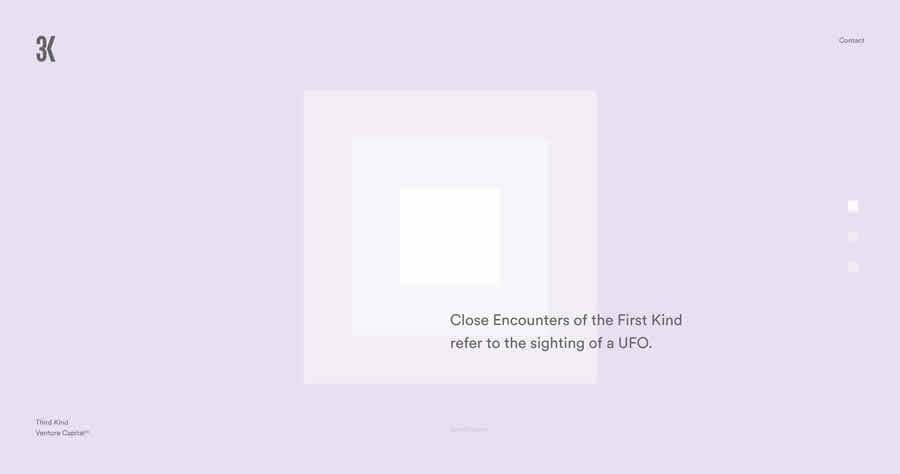
Source: speckyboy.com
Creating a simple and effective website hinges not only on visual appeal but also on the clarity and conciseness of its content. Users should be able to quickly find the information they need without wading through jargon or excessive text. This section explores how to achieve content simplicity and clarity, making your website both user-friendly and effective.
Writing concise and easily understandable web copy requires a shift in mindset from traditional writing styles. Instead of lengthy, complex sentences, aim for short, impactful statements. Use active voice and strong verbs to convey information directly. Avoid overly technical terms or industry jargon unless your target audience is highly specialized. Imagine explaining your website’s purpose to a five-year-old – that level of clarity is the goal.
Identifying and Removing Unnecessary Content
Often, websites suffer from information overload. Before focusing on improvements, a critical review of existing content is necessary. Ask yourself: Is this information essential? Does it add value to the user experience? If the answer is no, remove it.
Redundant information, outdated details, and irrelevant sections should be eliminated ruthlessly. Prioritize only the most crucial information that directly supports your website’s purpose.
Strategies for Improving Website Content Readability
Readability is paramount for a positive user experience. Several strategies can significantly enhance this aspect. Use short paragraphs (ideally, no more than three to four sentences). Employ a clear and consistent font, with sufficient spacing between lines and paragraphs to avoid a cramped appearance. Consider using a readability tool to assess your text objectively and identify areas for improvement.
Tools such as the Hemingway Editor can analyze sentence structure and identify complex vocabulary, providing actionable feedback.
Organizing Website Content with Headings, Subheadings, and Bullet Points
Structuring content logically is crucial for readability and comprehension. Use a clear hierarchy of headings (H1, H2, H3, etc.) to guide users through the information. Headings should accurately reflect the content below them. Subheadings break down larger sections into digestible chunks. Bullet points are excellent for listing key features, benefits, or steps in a process, improving scannability and comprehension.
Website Section with Concise and Clear Information
Below is an example of a website section demonstrating concise and clear information using blockquotes for emphasis:
Our mission is to provide exceptional customer service. We strive to respond to all inquiries within 24 hours. Our support team is available via email, phone, and live chat.
We guarantee 100% satisfaction with our products. If you are not completely satisfied, we offer a full refund or replacement. See our return policy for details.
Technical Simplicity and Performance
Website speed and performance are paramount for a positive user experience. A slow-loading website leads to high bounce rates, frustrated users, and ultimately, damage to your brand’s reputation. Technical simplicity, therefore, plays a crucial role in achieving optimal performance. A lean, well-structured website is inherently faster and more efficient.
Website Speed Optimization Techniques
Optimizing website code for faster loading times involves several key strategies. This includes minimizing HTTP requests, leveraging browser caching, and employing efficient coding practices. A well-structured codebase, free from unnecessary bloat, is fundamental. For example, using CSS efficiently and minimizing JavaScript execution time significantly improves loading speeds. Minification and concatenation of CSS and JavaScript files are common techniques to reduce the number of HTTP requests.
Image Optimization for Website Performance
Images are often the biggest culprits in slow-loading websites. Optimizing images significantly impacts performance. This involves compressing images without sacrificing quality, using appropriate image formats (like WebP for superior compression), and resizing images to the exact dimensions needed on the website. For example, a large, high-resolution image used as a background element might be unnecessarily large and could be optimized to reduce its file size without a noticeable impact on visual quality.
Tools such as TinyPNG and ImageOptim can help automate this process.
Tools and Techniques for Performance Improvement
Several tools and techniques can be used to improve website performance. These include using a Content Delivery Network (CDN) to distribute website content across multiple servers, improving server-side performance through caching and database optimization, and using performance monitoring tools like Google PageSpeed Insights and GTmetrix to identify bottlenecks and areas for improvement. These tools provide detailed reports highlighting specific aspects that need optimization, offering actionable insights and recommendations.
Regular performance testing and analysis are crucial for maintaining optimal website speed.
Minimizing Unnecessary Plugins and Scripts
Every plugin or script added to a website increases its loading time and complexity. A thorough audit of installed plugins and scripts is essential to remove unnecessary ones. Only include plugins and scripts that directly contribute to the website’s core functionality and user experience. Using lighter-weight alternatives or writing custom code where possible can further enhance performance.
For instance, replacing a heavy image gallery plugin with a more efficient, custom-built solution can significantly improve page load times. Careful consideration of each plugin’s impact is critical before integration.
Accessibility and Simplicity
Simplicity in web design isn’t just about aesthetics; it’s fundamentally linked to accessibility. A simple, clean design is inherently easier to navigate and understand for everyone, including users with disabilities. This means a simpler website is often a more accessible website. By focusing on core functionality and clear information architecture, we can create online experiences that are inclusive and usable for a wider audience.
I’m a firm believer that great web design is all about simplicity – clean lines, intuitive navigation, and a focus on the user experience. This same principle applies to other online platforms, too; for instance, creating a successful YouTube channel, as outlined in this awesome guide on getting it on with youtube , requires a clear and concise approach.
Ultimately, whether it’s a website or a YouTube channel, simplicity reigns supreme in creating a positive user experience.
Designing for accessibility isn’t about creating separate experiences for disabled users; it’s about creating a better experience for everyone. Consider, for example, the use of clear, concise language. This benefits not only users with cognitive impairments but also those who are simply short on time or prefer quick, easy-to-understand information. Similarly, well-structured content with logical headings and alt text for images improves the user experience for everyone, regardless of ability.
Designing Websites for Users with Disabilities, Web design is simplicity
Designing accessible websites involves considering a range of disabilities, including visual, auditory, motor, and cognitive impairments. This requires adhering to established accessibility guidelines, such as WCAG (Web Content Accessibility Guidelines), to ensure websites are usable by individuals with a wide spectrum of needs. Key aspects include providing alternative text for images, using sufficient color contrast, ensuring keyboard navigation is fully functional, and providing captions and transcripts for audio and video content.
Accessible Navigation and Content Best Practices
Clear and intuitive navigation is crucial for accessibility. This means using consistent and predictable navigation patterns, providing clear labels for links and buttons, and using ARIA attributes (Accessible Rich Internet Applications) where appropriate to enhance screen reader compatibility. Content should be structured logically with appropriate headings (H1-H6) to help users scan and understand the information. Bulleted lists and clear paragraph breaks improve readability and comprehension.
Examples of Accessible Design Elements and Techniques
Alternative Text for Images
Instead of `  `, use `
`, use ` `. This allows screen readers to convey the image’s content to visually impaired users.
`. This allows screen readers to convey the image’s content to visually impaired users.
Sufficient Color Contrast
Ensure enough contrast between text and background colors to make text easily readable for users with low vision. Tools are available online to check color contrast ratios.
Keyboard Navigation
All interactive elements should be navigable using only a keyboard. This is essential for users who cannot use a mouse.
Captions and Transcripts
Provide captions for videos and transcripts for audio content to make them accessible to users with hearing impairments.
Semantic HTML
Use appropriate HTML5 semantic elements (e.g., `
